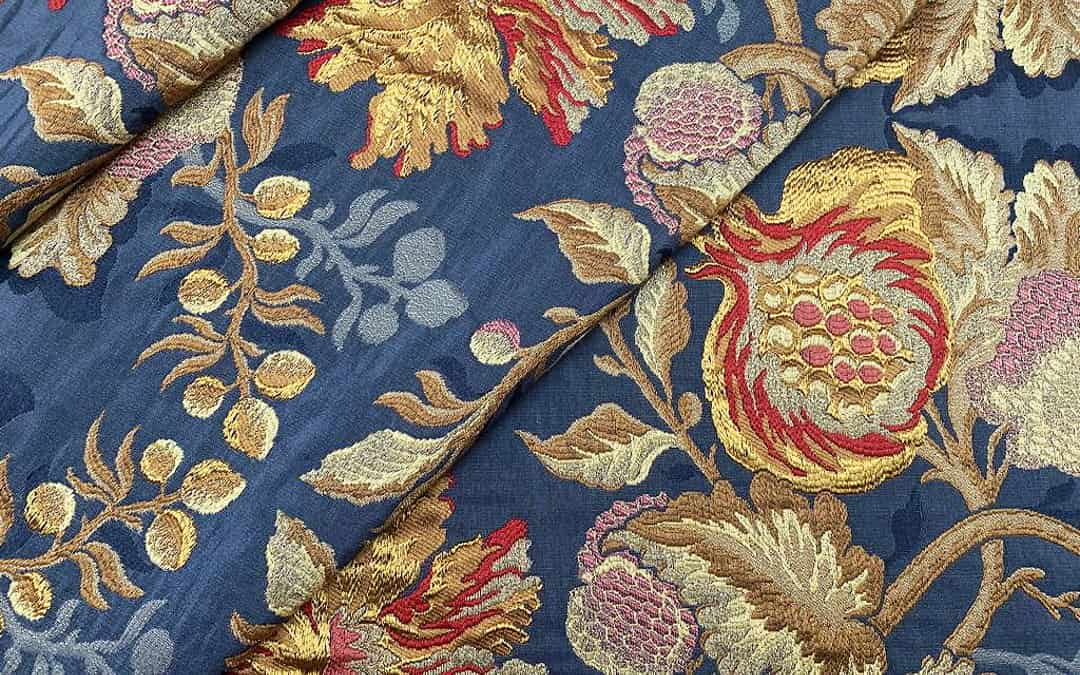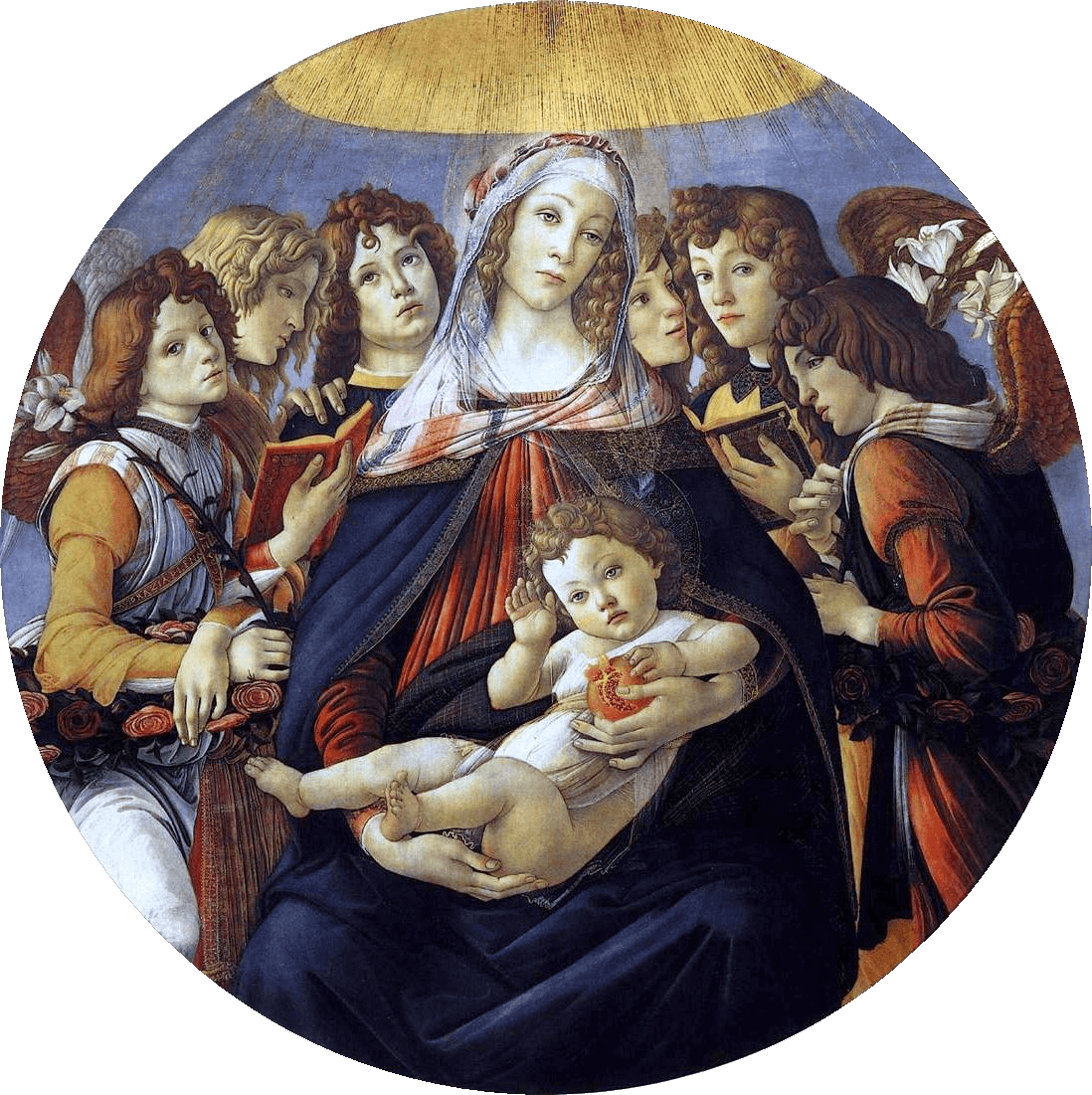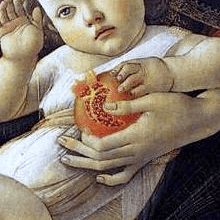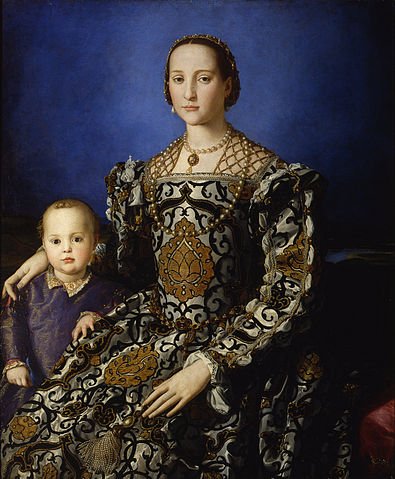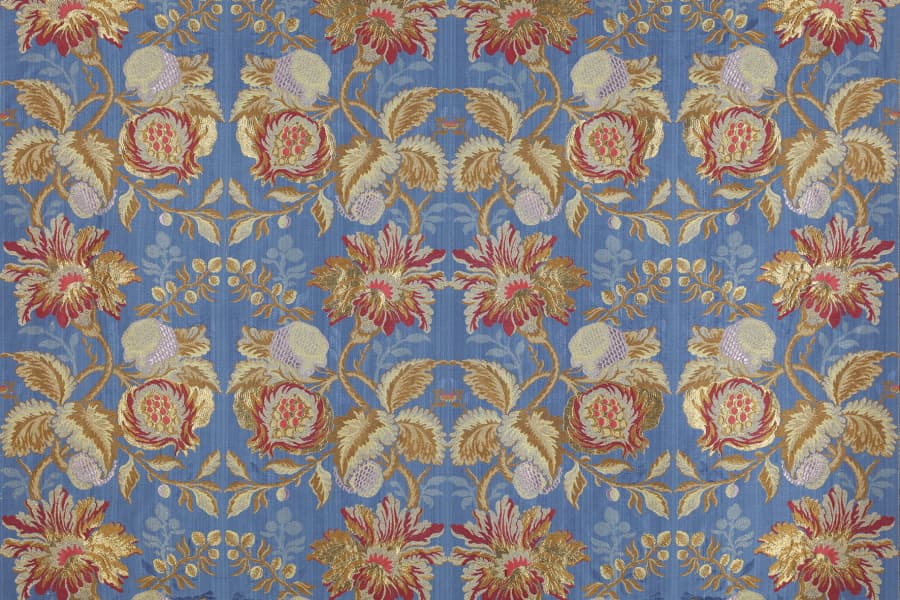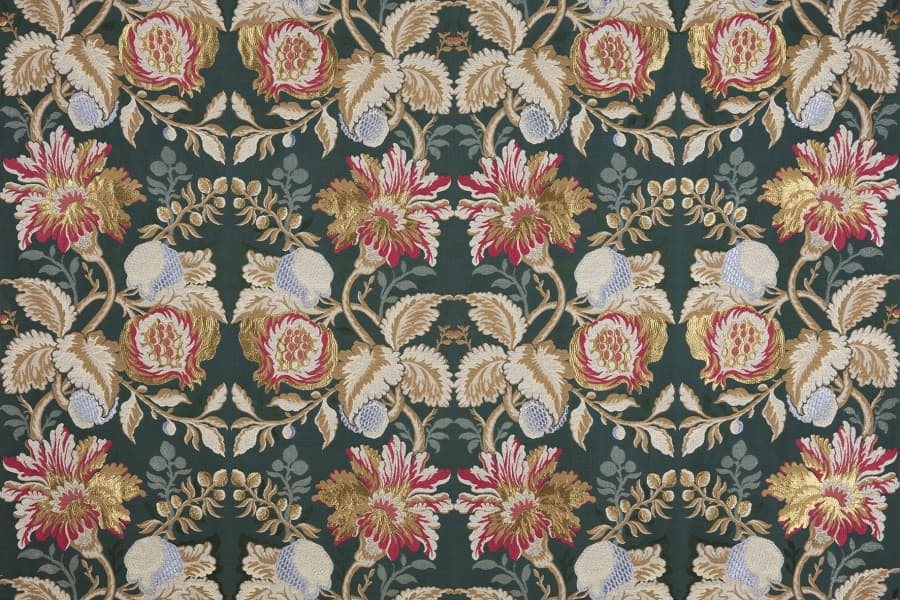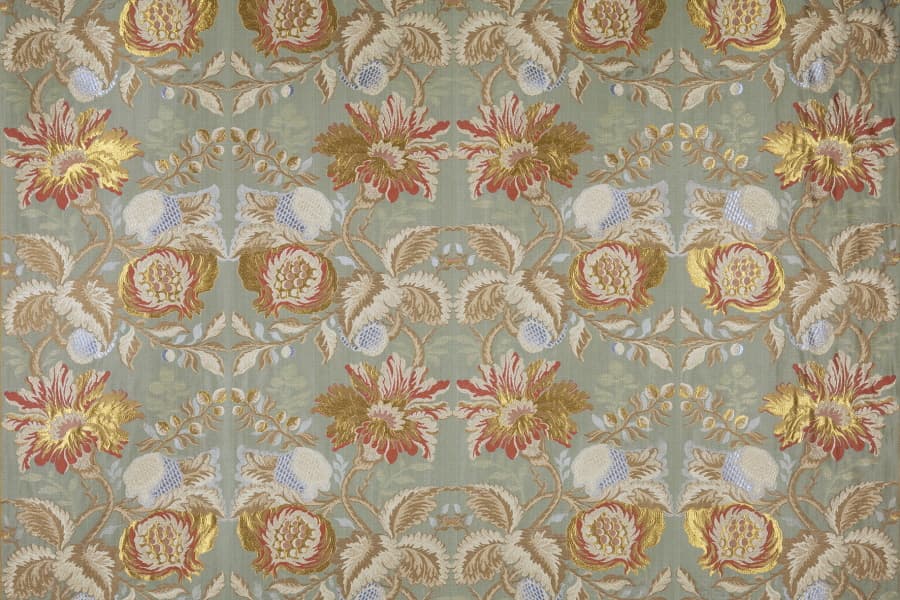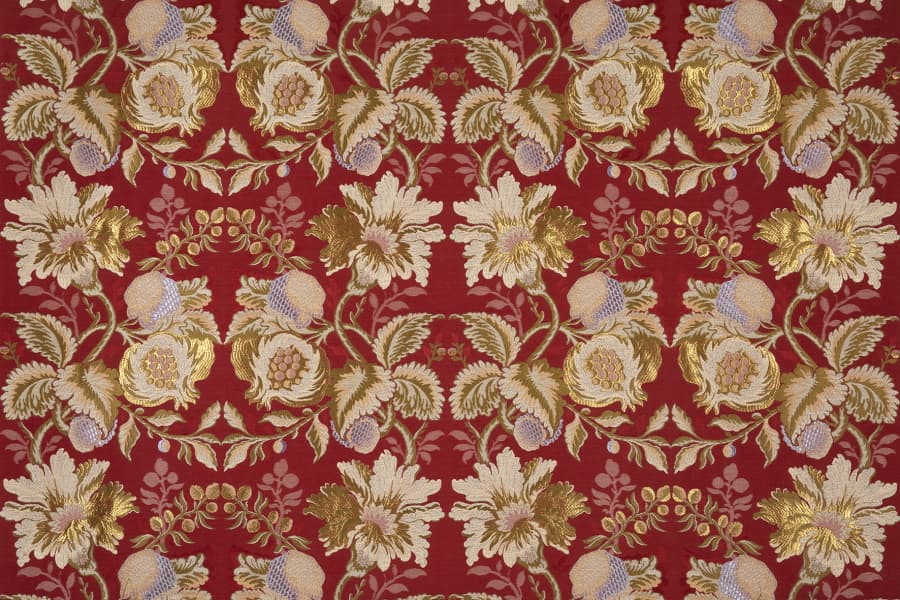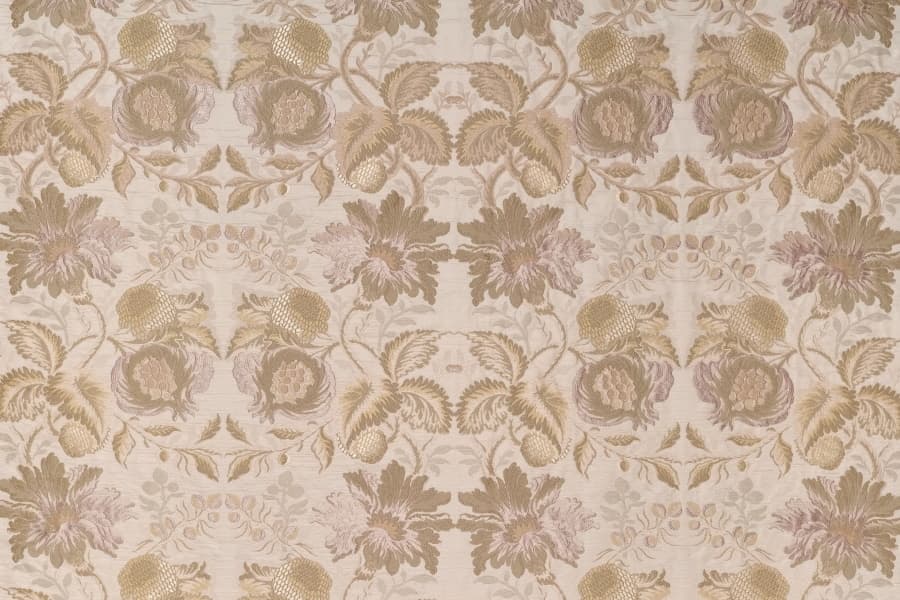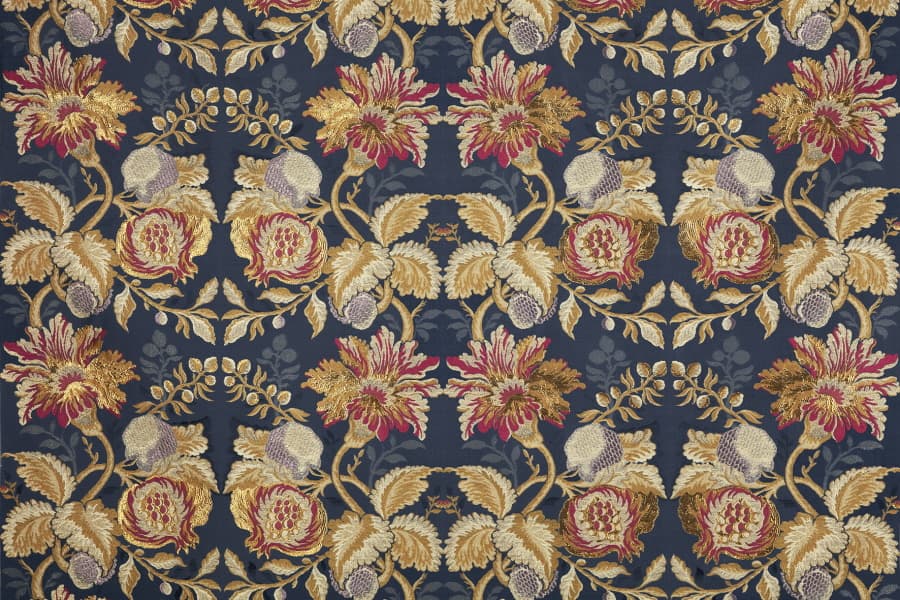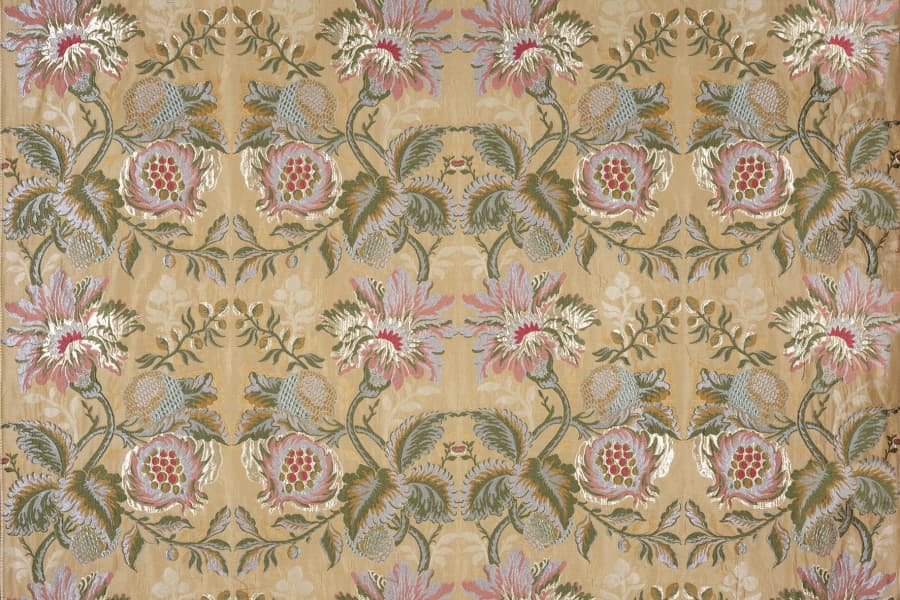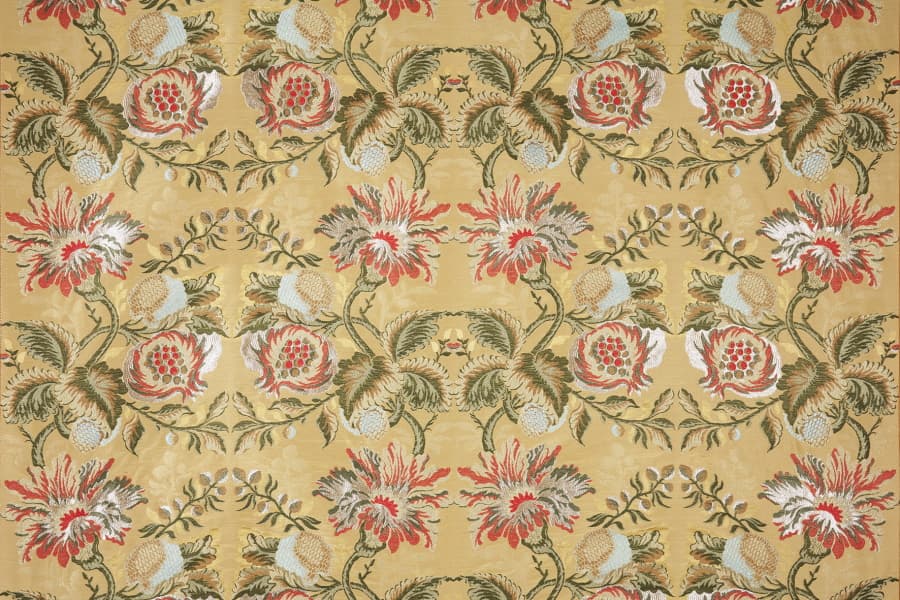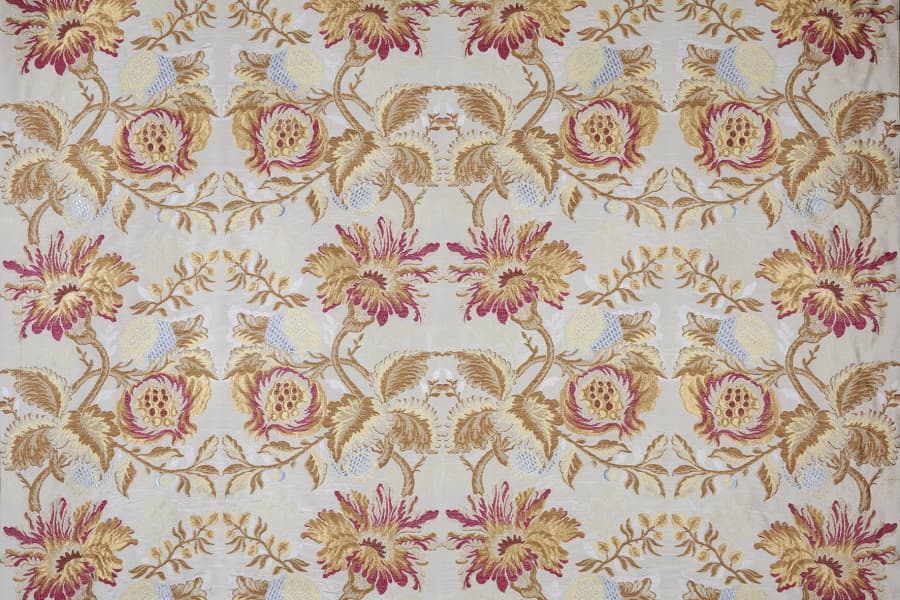There is a fruit that became one of the most beloved decorative motifs for fabrics in the Middle Ages and Renaissance: it’s the pomegranate, which you can find on silk fabrics such as lampases and velvets, either as stylized or realistic figures. Let’s find out why it was so popular and became the subject of one of our lampases.
The Symbolic Meanings of a Fabric Design
The pomegranate pattern appeared towards the end of the Middle Ages, in the 14th century, when merchants began importing textiles with this design from the Ottoman Empire, most of all into Venice. Its success continued and grew, becoming a favorite subject of Renaissance motifs for textiles.
However, the pomegranate fruit was already known in Europe. The Greeks and Romans had imported it from the Middle East, and it was one of the most inviting and exclusive delicacies in medieval cuisine.
But its popularity is mainly due to the fact that it is mentioned in the sacred texts of several religions for the symbolic meanings it holds:
- it is a symbol of fertility and abundance, because of the large number of grains it contains, about 600;
- it was a delicacy which few could afford, and this value is clear even when it’s used in figurative arts;
- its shape resembles a crowned head, so it is often used as a sign of regality. That’s why you can find it on various religious paintings, such as the Madonna of the Pomegranate (1487) by Botticelli, where the pomegranate fruit stands for Christ’s majesty. Moreover, with the color of its juice being red like blood, it also evokes the passion of Jesus, another symbolism linked to Christianity;
- in Jewish tradition, the pomegranate represents justice because it is said to contain 613 grains (arils) as many as the prescriptions of the Torah, by observing which one behaves fairly and justly.
The pomegranate pattern is meaningful and perfect for those who wanted to express their wealth and their power with the clothes they wore.
A Pattern for Luxury Fabrics and Noble Clothing
There are many paintings that testify to the use of pomegranate-patterned dresses for noble ladies. Examples are the portrait of a young woman painted by Antonio del Pollaiolo around 1465 and that of Eleanor of Toledo by Agnolo Bronzino (1544).
Pomegranate motifs were very complex to make, and therefore expensive. The most realistic ones required highly skilled artisan weavers and a lot of time to make them. In addition, these fabrics were often woven using gold threads, which made them even more precious and, at the same time, perfect for communicating the wearer’s status.
Melograno Lampas
Our Melograno lampas is a splendid example of a pomegranate-patterned fabric dating from the 18th century and reflecting the decorative characteristics of Rococo, elaborate but lightened compared to Baroque opulence, with softer lines and pastel colors. The fruit is depicted realistically, allowing glimpses of the grains inside. Small shoots wind through the composition enriched by large flowers and mellowed by curved leaves and small berries.
This lampas, made of silk, cotton and viscose, is enriched with metal threads that embellish the decoration by illuminating refined details. The colors offered are numerous, reflecting an exquisite color balance.
Like all lampas, it lends itself to interior decoration as upholstery and draperies, for accessories such as decorative pillows, for luxury wall hangings and ecclesiastical vestments, as well as for exclusive clothing.
Melograno Lampas on Social Media
Visualizza questo post su Instagram
Visualizza questo post su Instagram
Visualizza questo post su Instagram
Cover Photo: Melograno Lampas - Blue

